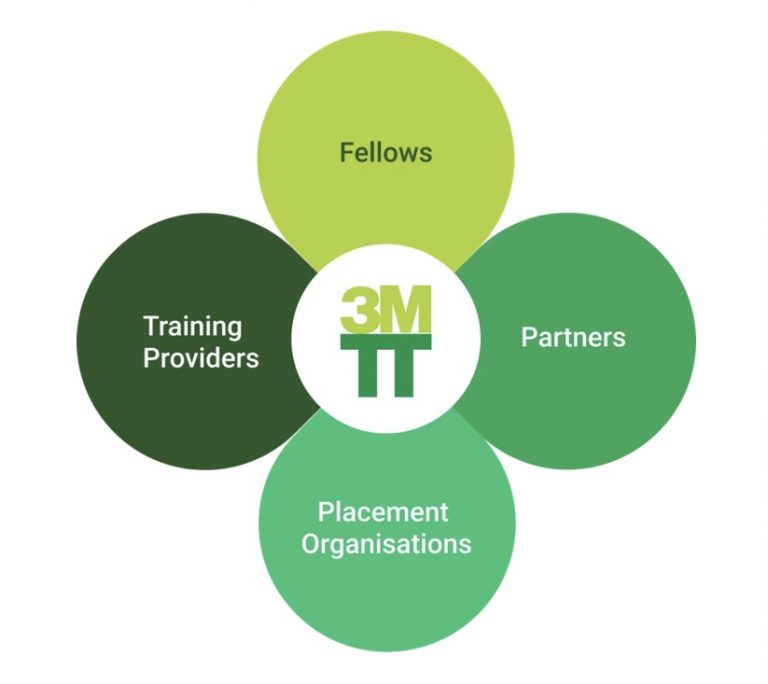
The 3MTT programme has emerged as a beacon of youth empowerment and technological innovation in Nigeria, fostering creativity and providing a platform for groundbreaking ideas. In 2024, the hackathon component spotlighted a diverse array of projects, from waste management solutions to healthcare innovation, highlighting the untapped potential of young minds in addressing societal challenges. Yet, a lingering question persists: what will happen to these promising projects? For the 3MTT initiative to achieve lasting impact, we must explore how to transition these ideas from prototype to scalable solutions and what this means for Nigeria’s innovation ecosystem.
Ideas Born in Hackathons: A Glimpse into Innovation
At the heart of 3MTT’s hackathons are stories of ingenuity and resilience. Take, for example, Farida Sulayman’s app connecting users with waste collectors to improve waste management efficiency, or Yusuf Nasir’s HealStoc, a digital health platform for rural communities that combines telemedicine with a cloud-based information system. These innovations demonstrate not only a deep understanding of societal needs but also the ability to leverage technology for transformative outcomes.
Other standout projects include Ibrahim Laweso’s platform which connects farmers directly to buyers while providing access to loans and grants, and Blessing Nnamani’s child abuse reporting platform, which uses USSD and mobile applications to address underreporting while maintaining user privacy. Each of these innovations addresses critical gaps in sectors such as agriculture, healthcare, and social welfare, showcasing the potential to make a lasting difference.
Register for Tekedia Mini-MBA edition 19 (Feb 9 – May 2, 2026): big discounts for early bird.
Tekedia AI in Business Masterclass opens registrations.
Join Tekedia Capital Syndicate and co-invest in great global startups.
Register for Tekedia AI Lab: From Technical Design to Deployment (next edition begins Jan 24 2026).
The Gap Between Potential and Reality
Despite their promise, hackathon projects often face significant challenges in moving beyond the ideation phase. Many stall due to a lack of funding, mentorship, or access to resources. Farida’s app, for instance, will require partnerships with municipal waste authorities to scale effectively. Similarly, HealStoc needs robust infrastructure to support telemedicine in remote areas with limited internet connectivity.
Without a strategic framework to nurture these projects, there’s a risk that the talent and effort invested will yield little beyond the hackathon stage. This is not just a loss for the innovators but for the country, which stands to benefit from solutions tailored to its unique challenges.
Transitioning from Prototypes to Scalable Solutions
To bridge this gap, a multi-pronged approach is essential, addressing scalability, funding, mentorship, policy support, and community engagement.
Funding and Investment: Access to capital is critical. Government and private sector partnerships can play a pivotal role in providing grants or seed funding. For instance, HealStoc could secure partnerships with health organizations or NGOs focused on rural healthcare, while Ibrahim’s agricultural platform could attract investments from agribusinesses or microfinance institutions.
Mentorship and Capacity Building: Hackathon participants need guidance to refine their ideas and align them with market demands. Incorporating post-hackathon incubation into the 3MTT programme would ensure sustained support, offering training in business development, marketing, and user-centric design.
Policy and Institutional Support: Innovations like Blessing’s child abuse reporting platform or Farida’s waste management app would thrive with institutional backing. Governments and agencies must integrate these solutions into their systems, providing the necessary infrastructure and regulatory support to ensure adoption.
Technology and Infrastructure: Projects such as FRIXION, which connects service seekers with providers, and Chukwuemeka Noble Odoh’s cybersecurity solution, rely on digital infrastructure. Investing in internet accessibility, cloud computing, and local language integration would make these solutions more inclusive and widely adopted.
Community Engagement and Awareness: Building trust and ensuring widespread adoption requires effective communication and community outreach. Platforms like HealStoc could benefit from user feedback loops, while Farida’s app might achieve higher adoption through public awareness campaigns about the benefits of timely waste collection.
Building a Legacy of Impact
The hackathon projects of 2024 have set a high bar, demonstrating the ingenuity of Nigerian youth and their capacity to solve real-world problems. But their true success will be measured by their ability to scale, sustain, and create lasting impact.
The 3MTT programme must now evolve, not just as a platform for ideation but as an engine for innovation that addresses systemic challenges and empowers young Nigerians to drive change. This can create a legacy of impact that extends far beyond the hackathon stage, reshaping Nigeria’s socio-economic landscape and positioning the country as a global hub for innovation.
The question of “What will happen to all these hackathon projects?” is not just a query but a challenge to all stakeholders — a call to action to ensure these ideas reach their full potential. The future of 3MTT and the promise of these innovations depend on it.



